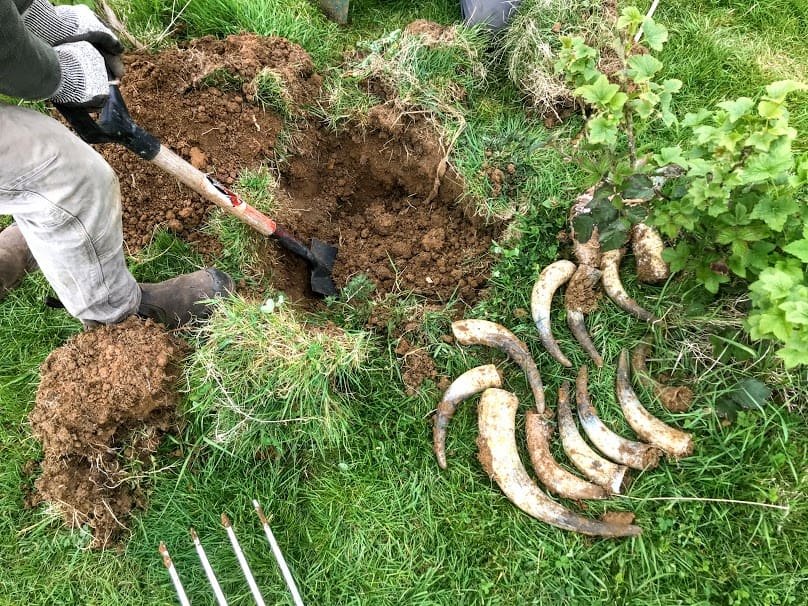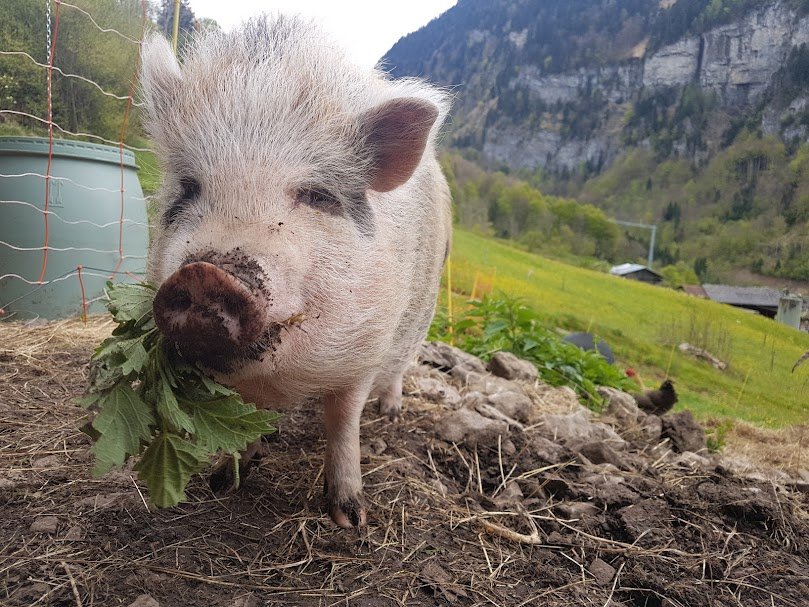Biodynamics is a holistic form of agriculture originating from eight Lectures Rudolf Steiner gave on agriculture in 1924. Biodynamic farmers incorporate earthy and cosmic rhythms in their activities, they perceive the farm as its own individuality, and they prepare and apply for potentized medicines onto their soil and plants, which are known as biodynamic preparations.

Introduction
Nourishment is the core of the biodynamic practice. By adopting biodynamic practices, all that we grow will have the vitality to nourish us, while nurturing our soils, and the earth.
Through biodynamics, we arrive at a mediating point between food production and nature. If we compare biodynamics to conventional agriculture, then this point is strikingly clear. Conventional agriculture exploits the land and ecosystems while providing us with chemically grown food lacking the vitality to truly nourish the human being.
Biodynamic concepts can be very difficult to share, they can come across as being cuckoo and lacking scientific scrutiny, and many people lose interest immediately when someone talks about stuffing camomile into a cow’s intestine and burying it in the ground.
In September, I gave a presentation on “What Is Biodynamics?” to colleagues that work in a therapeutic education setting with biodynamic farms and gardens at the heart. I wanted to explain biodynamics in a way that would resonate with them and place biodynamic concepts clearly on the ground…to begin with. It’s true that biodynamics is spiritual and can be explored to greater and greater depths by those interested. But to begin with, it’s important to look at the practical aspects, and why biodynamics is so important.
Purely for simplicity, I have decided to break down biodynamics into four key concepts, but it’s important to note that all these concepts interrelate and enhance each other.
The Farm Organism
The farm organism is a way of seeing the farm as individuality in itself. A farm is made up of many parts which all interrelate. Most farms have the necessity of bringing in inputs from outside the farm in order to carry out the day-to-day processes such as purchasing feed from outside in order to feed their animals.


A biodynamic farm will aim to create everything it needs within itself. This ideal is unobtainable for most farms, and Steiner knew this, but we should still strive to get as close to this ideal as we can on our farms.
The principles of the farm organism come will multiple benefits that are even more important against the backdrop of the environment, energy, and transportation crises that we are seeing today. Biodynamic farmers will need to observe their farms and help the farm organism to maintain a balance. You will understand that a farm of a certain size, can only hold a certain number of animals, if there are too many animals then the land may become degraded, outside inputs will be necessary, and the animals may fall into poor health.
Likewise, if a grower ploughs up wildlife areas in order to have more land for cultivation, they may find that their vegetables become attacked by pests, due to a neglect of the biodiversity which truly sustains the farm organism.
“A farm is true to its essential nature….if it is conceived as a kind of individual entity in itself — a self-contained individuality. “ – Rudolf Steiner
It’s interesting to note that biodynamic agriculture predates the organic movement. The term organic farming was actually coined by Lord Northbourne in the 1940s derived from Rudolf Steiner’s concept of a farm organism.
Building Health Up From The Soil
Biodynamic farmers and growers place an emphasis on the health of the soil as being the key to a healthy farm. Many say that they are indeed growing the soil, and not the plant, if the conditions are right in the soil then the plant will grow.
Rudolf Steiner was asked to give to talk about agriculture, as farmers in Germany noticed that their soil wasn’t as healthy, following the use of fertilizers. While the fertilizers fed the plant what it needed to grow, they neglected the intricacies of the soil with its fungi networks and biology. Farmers experienced short-term gains and became reliant on the continual purchasing and usage of fertilizers to make up for the lifeless soils that they created.


Biodynamic agriculture prohibits the use of any chemicals. The soil has to be nourished through responsible farming techniques, such as crop rotations, composting, manures, low-impact tillage, cover crops, and biodynamic preparations.
The preparations are unique to biodynamics, and they are tools to help restore vitality to the soil, and support plant development. There are nine core biodynamic preparations, that are used to improve soil health and help heal the earth. The grower’s relationship with the garden is also strengthened through the making, and use of biodynamic preparations which can be a very meditative and thoughtful practice, which is often done together in the early hours when the sun is rising.
Cosmically Connected
Biodynamic practitioners endeavour to take into consideration the activities of the cosmos, as these are understood to have subtle influences on the growth of plants. There are streams of forces that work through the plant, streaming up through the roots, and also streaming down through the plant.
There is a biodynamic calendar that was developed by Maria Thun. It uses the constellations of the Moon, to indicate favourable, or unfavourable planting/cultivating/pruning timings for plants associated with leaf, fruit, root, or flowering/seed qualities.


Nourishment
“We must never forget that the fundamental aim of biodynamic agriculture is the production of quality nutrition, whilst respecting nature’s kingdoms and the creatures that live in it.” – Pierre Mason
Recent Posts
Biodynamic Ecology and the Brain: How the Farm Organism Aids Neurodivergent Self-Regulation
The Farm as a Living Organism The Farm Organism is a fundamental concept within the biodynamic agricultural method, which began in 1924 with a series of eight lectures on agriculture by...
In February 2024, I attended the 100th biodynamic conference at the Goetheanum in Dornach, Switzerland. Here, biodynamic farmers, educators, winemakers, community leaders, and growers met to share...
